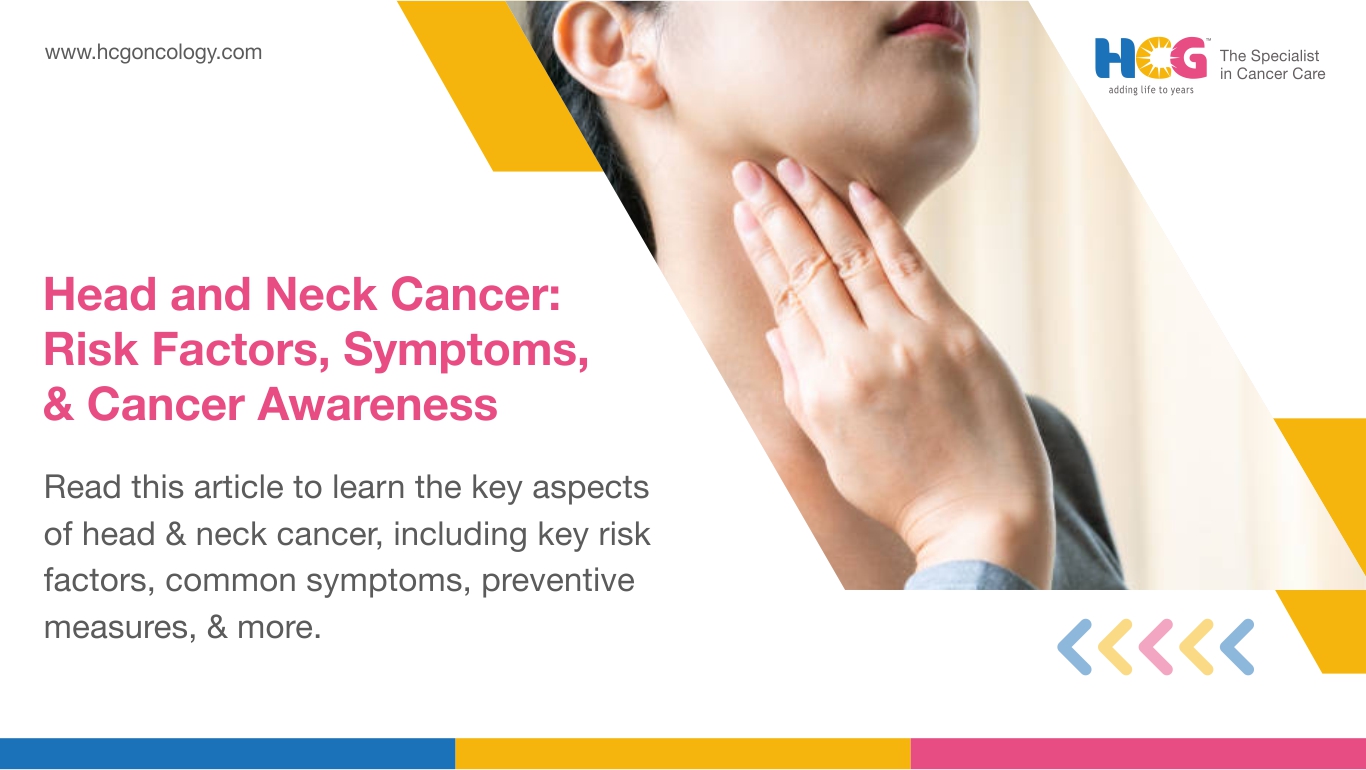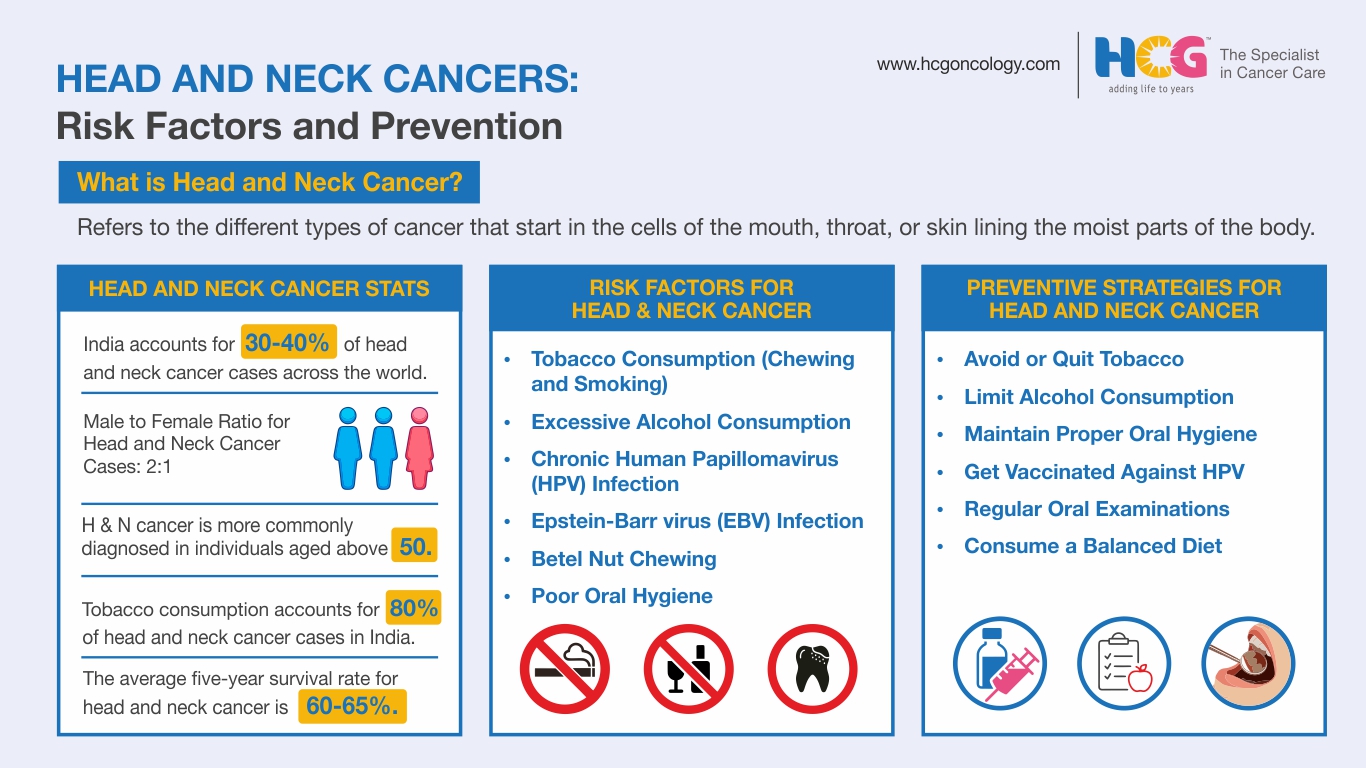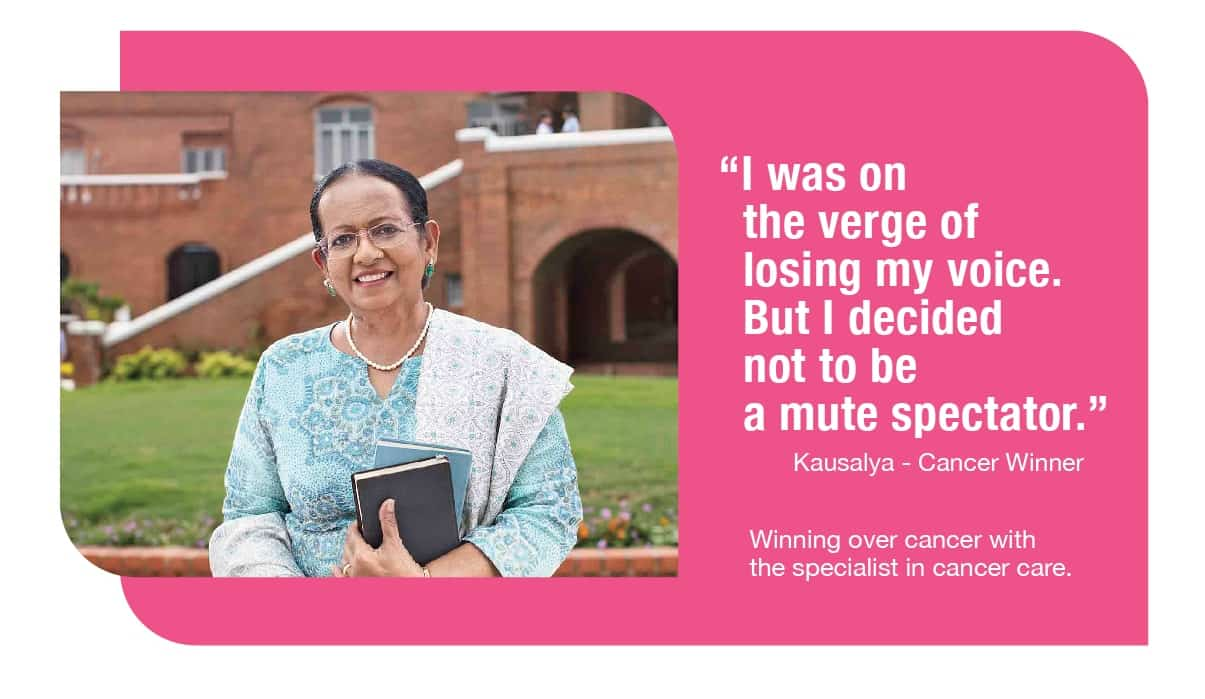
13 Nov, 2025
Feel free to reach out to us.

13 Nov, 2025

This article is medically reviewed by Dr. Shilpi Agrawal, Consultant - Head and Neck Oncosurgery, HCG Cancer Centre, Borivali.
Head and neck cancer is a term used to describe different types of cancer that start in the cells of the mouth, throat, or skin lining the moist parts of the body.
Head and neck cancer is the collective term given to malignant tumors found in the lips, mouth, tonsils, base of the tongue, oropharynx, hypopharynx, larynx, sinonasal cavities, nasopharynx, thyroid gland, parathyroid glands, and salivary glands.
Most head and neck cancers are squamous cell carcinomas. Early detection of head and neck cancer is crucial for effective treatment and improved survival rates.
Head and neck cancer awareness month is observed during April every year to spread awareness about the disease, its symptoms, risk factors, and available treatments.
This practice also encourages early identification and routine checkups for head and neck cancer prevention.
Many healthcare organizations, NGOs, and other healthcare bodies organize educational workshops and cancer screening camps as part of head and neck cancer observance.
There is no specific theme for the 2025 head and neck awareness observance.
Every year, doctors, head and neck cancer associations, NGOs, advocates, survivors, patients, and the general public observe head and neck cancer awareness to shed light on various key and unique aspects of head and neck cancer.
Head and neck cancer initiatives primarily focus on educating the masses on cancer preventive strategies, the importance of early detection, treatment options for head and neck cancer, andsurvivorship guidance.
Dr. Shilpi Agrawal
The head and neck cancer awareness ribbon is burgundy and ivory. This ribbon represents resistance to the sickness; it is put on as a mark of respect for the victims and also to show support for the awareness program.
It is often used during head and neck cancer awareness week in India and other global observances.
The World Health Organization (WHO) says that head and neck cancer accounts for approximately 4% of the global cancer cases.
India accounts for 30-40% of head and neck cancer cases across the world, as there are common hazards such as smoke and smokeless tobacco, alcohol consumption, and HPV infection are on the rise.
It mostly occurs among males and individuals who are above 50.
Identifying the early signs of head and neck cancer is crucial. Commonly observed head and neck cancer symptoms include:
If any of these symptoms persist for more than two weeks, it is essential to consult a healthcare provider immediately.
Watch this video as one of the specialists from our HCG network briefly explains the key aspects of head and neck cancer:
Several lifestyle and environmental factors contribute to the development of head and neck cancer:

Here are various ways you can support the observance of head and neck cancer awareness month:
Recent clinical studies have shown that there is a rise in cases of head and neck cancer caused by HPV, especially in developed countries.
This type of cancer is now more common among young non-smokers/non-alcoholics.
According to the studies:
Here are practical steps to aid in head and neck cancer prevention:
Be aware of the early signs of head and neck cancer and see a doctor if you experience any oral symptoms for more than two weeks.
At HCG, a leading hospital for cancer treatment in India, we have embraced a multidisciplinary, personalized, and patient-focused approach to treating and managing head and neck cancers. We employ high-end diagnostic and treatment facilities and other oncology services to help our patients receive better quality care and support throughout their treatment journey.
At HCG, we prioritize the overall well-being of our patients, and therefore, we also offer allied services, such as speech and swallowing therapy, nutritional counseling, physiotherapy, and more, to help the patient recuperate better.
Head and neck cancer is a significant public health concern, especially in regions like India. Spreading awareness during head and neck cancer awareness month and head and neck cancer awareness week in India can lead to earlier diagnoses, better treatment outcomes, and increased support for those affected.
Recognizing early signs of head and neck cancer, understanding the risk factors, and taking preventive steps are vital. By supporting education, research, and advocacy, we can collectively reduce the burden of this disease.

Author Bio : Dr. Shilpi Agrawal
Consultant - Head and Neck Oncosurgery
MBBS, MS (ENT), Fellowship in Head & Neck Oncology (FHNO)
Dr. Shilpi Agrawal is an accomplished head and neck oncosurgeon, and she is available for consultations at HCG Cancer Centre, one of the best cancer hospitals in Borivali. Holding an MS in ENT and a fellowship in head & neck oncology from the esteemed FHNO, she brings 4 years of focused experience, including her tenure at a high-volume, central government-run regional cancer center in Kolkata. Dr. Shilpi is well-versed in treating and managing different types of head and neck cancers through open and minimally invasive treatment approaches
Dr. Shilpi is known among her patients for her honesty, understanding, and compassion. Her patient-focused approach to cancer has established her as a trusted and reliable professional in the field of head and neck oncology.
Appointment Link: Book an Appointment with Dr. Shilpi Agrawal.
